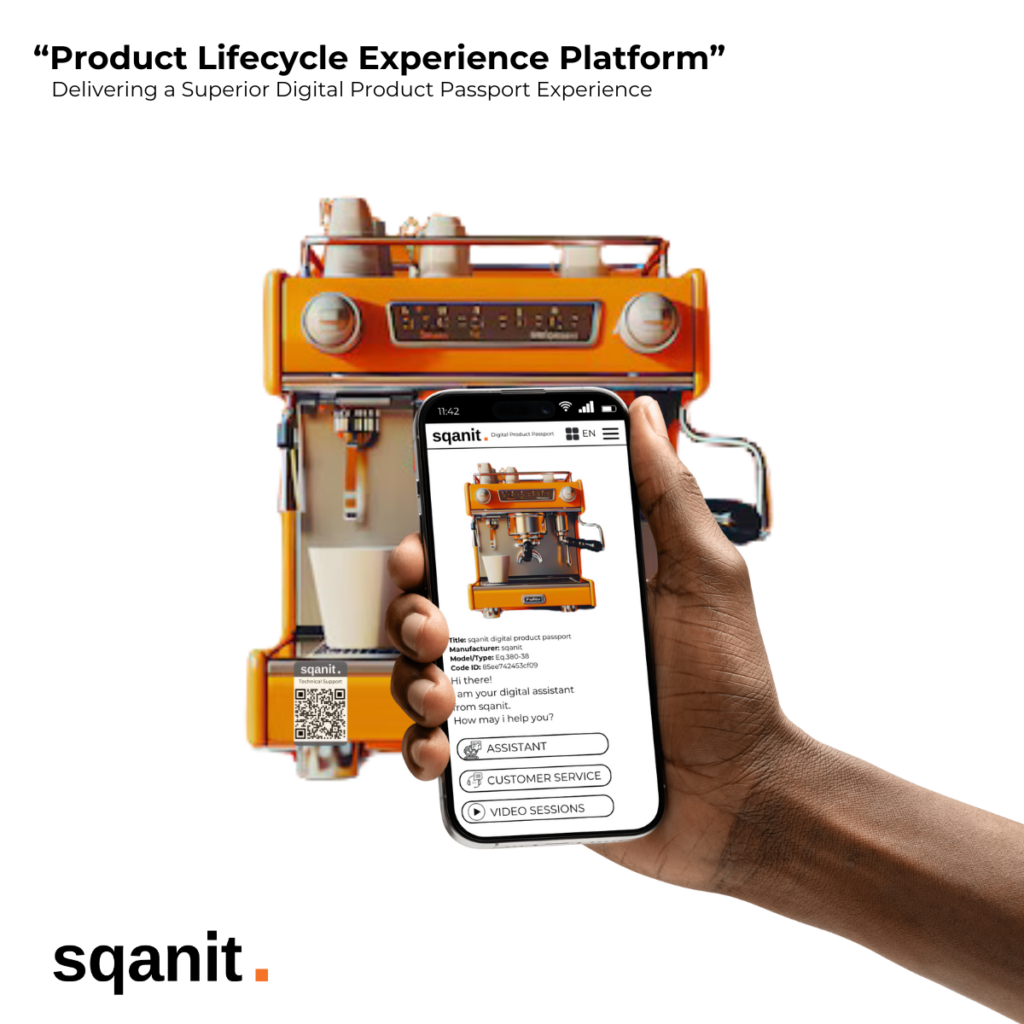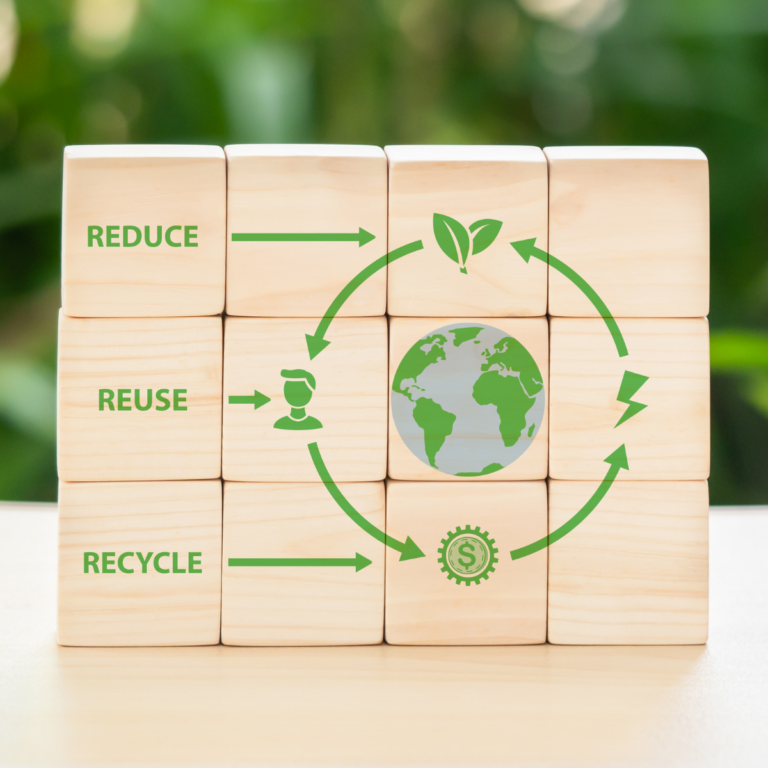Introduction
The European Union has taken significant strides in environmental sustainability, particularly by establishing regulations that prioritize ecological standards in the product design phase. At the forefront of these efforts is the “European Ecodesign Directive” (Directive 2009/125/EC). First implemented in 2009, this directive aims to reduce the environmental impact of certain product groups within EU member states, supporting a more sustainable future.
The Ecodesign for Sustainable Products Regulation builds upon this directive, addressing environmental impacts associated with product design in a more comprehensive manner. This regulation sets out to create eco-friendly products by emphasizing key areas, including energy efficiency, material reduction, and recyclability.
In addition to lowering energy consumption, the regulation introduces innovative design criteria aimed at reducing environmental impacts throughout a product’s lifecycle.

Characteristics of Sustainable Products
Sustainable products are developed with a strong focus on minimizing environmental and social harm. Adhering to sustainability principles, these products are designed to have a reduced ecological footprint across their lifecycle. Generally, a product is considered sustainable if it exhibits the following characteristics:
- Lower Energy Consumption: Sustainable products are engineered to be energy-efficient, ensuring energy savings during both their production and use.
- Longevity: Designed with high-quality, durable materials, sustainable products are intended for long-term use, minimizing the need for frequent replacements.
- Ease of Repair: Sustainable designs allow for easy repair, extending product lifespans and reducing waste generation.
- Ease of Disassembly and Reusability: Sustainable products are structured for easy disassembly at the end of their lifecycle, enabling parts to be reused and promoting resource efficiency.
- Reduced Harmful Substances: Sustainable products are designed with minimal or no harmful chemicals, reducing potential health and environmental risks—a key consideration in sectors like electronics and textiles.
- Recyclability: Materials used in sustainable products are chosen for their recyclability, allowing products to serve as reusable resources instead of becoming waste.
- High Recycled Content: By using recycled materials, these products decrease reliance on natural resources and lessen their environmental impact.
- Low Carbon and Environmental Footprint: Sustainable products are developed to maintain a low carbon footprint and minimal environmental impact throughout their lifecycle, from production to recycling, upholding principles of environmental responsibility.
Products with these features offer not only environmental advantages but also economic and public health benefits. They empower consumers to make informed choices and encourage producers to innovate toward sustainability goals.

Implications of the Ecodesign for Sustainable Products Regulation for Businesses
The Ecodesign for Sustainable Products Regulation will substantially impact companies, particularly those operating within the European Union or exporting to the EU market. Here’s how businesses are expected to be affected:
1. Product Design and Development Processes
Companies will need to incorporate sustainability principles directly into the design and development stages. This will involve prioritizing energy efficiency, durability, repairability, recyclability, and material efficiency from the outset. To meet these requirements, businesses will need to adopt innovative, sustainable approaches in their R&D efforts.
2. Impact on Production and Supply Chains
The regulation encourages sourcing materials from sustainable origins and reducing harmful substances. Companies may need to reevaluate their supply chains, fostering new partnerships to meet requirements for recycled and recyclable materials. These adjustments will likely reshape how companies approach material sourcing and production processes.
3. Compliance Costs
Adhering to the new regulation may entail additional costs, including investments in sustainable design and production processes, training for staff, and adjustments to create a more sustainable supply chain. However, these initial costs could translate into long-term savings and competitive advantages, as sustainable practices often drive efficiency.
4. Marketing and Competitive Advantage
Businesses that produce sustainable products will have a competitive edge among environmentally conscious consumers. Compliance with the Ecodesign for Sustainable Products Regulation enables companies to strengthen their brand image by emphasizing the eco-friendly aspects of their offerings, attracting consumers who prioritize sustainability.
5. Legal Compliance and Traceability Requirements
The regulation requires companies to document and monitor the environmental impacts of their products throughout their lifecycle. This means businesses will need to enhance traceability, reporting, and auditing processes to ensure compliance, creating new responsibilities for legal oversight and environmental accountability.
6. Innovation and New Product Development Opportunities
The Ecodesign for Sustainable Products Regulation also opens up opportunities for innovation centered on sustainability. Companies that embrace these requirements can develop eco-friendly products, appeal to a broader market, and stand out in a competitive landscape by leading in sustainability.
In the long term, the Ecodesign for Sustainable Products Regulation is expected to enhance the environmental accountability of businesses while creating avenues for sustainable growth. Companies will need to reshape their business practices and product development strategies to align with the new regulatory framework, positioning themselves for a future where sustainability is paramount.
The Digital Product Passport (DPP) and the Ecodesign for Sustainable Products Regulation (ESPR): A Synergistic Approach to Sustainable Product Management
The Ecodesign for Sustainable Products Regulation (ESPR) seeks to elevate sustainable product management, with the Digital Product Passport (DPP) playing a pivotal role in this mission. Acting as a digital identity for products, components, and materials, the DPP securely stores essential information related to sustainability, circularity, and compliance for each product.
If you would like to learn more about Digital Product Passports and explore the opportunities this innovative solution offers, please fill out this form, and we will get in touch with you.
The Digital Product Passport is a vital tool for advancing sustainability goals, empowering consumers, manufacturers, and regulatory authorities to make well-informed choices. Through the DPP, users gain access to valuable insights regarding the sustainability attributes, recyclability, and regulatory compliance of products. Additionally, customs authorities will be able to efficiently verify the existence and accuracy of DPPs for imported goods, ensuring consistency and transparency in sustainable practices.

The European Commission, in collaboration with stakeholders, will tailor the DPP’s content based on the specific product type. Information stored in the DPP may include:
- Technical Performance of the Product: Details on durability, energy efficiency, and functional characteristics.
- Materials and Origin: Information on the materials used and their sources, ensuring traceability of resources.
- Repair Information: Guidance on the product’s repairability, maintenance processes, and repairable components.
- Recycling Features: Information on the recyclability of the product and specific components that can be repurposed.
- Lifecycle Environmental Impacts: Data on the environmental impact across the product’s entire lifecycle, such as carbon footprint metrics.
The Digital Product Passport will facilitate access to this information across all stages, from production through to consumer use, and contribute to the improvement of sustainability standards. By promoting the reuse, repair, and recycling of products in line with circular economy principles, the DPP will ensure that companies uphold stricter compliance with regulatory standards, supporting a shift towards a more sustainable and transparent marketplace.
sqanit’s Digital Product Passport (DPP) Solution: Enabling Compliance with the Ecodesign for Sustainable Products Regulation (ESPR)
Munich-based technology innovator sqanit has introduced an advanced Product Lifecycle Experience (PLX) Platform for Digital Product Passports (DPP), offering companies a robust solution for sustainable product management. This platform assists businesses in maximizing the value of their products throughout their lifecycle and enhancing post-sales experiences for physical products. By supporting companies in meeting their sustainability objectives, sqanit’s platform enables compliance with the Ecodesign for Sustainable Products Regulation (ESPR) and the EU Circular Economy Action Plan.

Sustainability and Compliance through Digital Product Passports
sqanit’s DPP solution is designed to help companies reduce environmental impacts and promote circular economy principles. Using sqanit’s platform, businesses can manage comprehensive details such as technical performance, material sourcing, repairability, and recyclability of each product on a unified digital platform. This information becomes readily accessible to customers and regulatory authorities at each stage of a product’s lifecycle, ensuring transparency, sustainability, and regulatory compliance.
Key Features of sqanit’s Solution
Beyond the Digital Product Passport, sqanit’s platform includes several advanced features that enrich user experience and help businesses meet customer needs while adhering to regulatory requirements. These features include:
- AI-Powered Self-Service Options: Users can find answers to their questions quickly and efficiently, enhancing the customer experience.
- File Management: Provides easy organization and storage of user manuals and essential documentation, simplifying access to important product information.
- Service Communication Tools: Features such as chat and ticketing systems enable seamless communication, enhancing customer support.
- AR-Supported Remote Assistance: Visual guidance through augmented reality enables users to resolve complex issues with ease.
Through sqanit’s solution, users can report issues quickly and receive real-time support via video calls, significantly improving the overall customer experience and service quality.
By implementing sqanit’s DPP platform, companies can effectively align with the Ecodesign for Sustainable Products Regulation and the EU’s circular economy goals, providing transparency to consumers and regulatory bodies alike. This not only advances sustainability practices but also strengthens brand reputation and customer loyalty through an enhanced lifecycle experience.
Contact Us if you would like to learn more about our Digital Product Passport (DPP) solutions and the versatile capabilities of the sqanit platform, our team is here to assist you. Contact us to maximize the lifecycle value of your products and ensure compliance with future regulations.
Contact: sales@sqanit.com
We look forward to answering your questions and providing you with tailored solutions!

Digital Product Passports: A Pathway to Enhanced Sustainability
sqanit’s Digital Product Passport (DPP) solutions serve as a crucial enabler for sustainability and transparency, offering companies an efficient platform to manage product information while delivering a seamless user experience. By adopting sqanit’s DPP solutions, businesses can provide customers and stakeholders with detailed, accessible information that supports more conscious consumption habits, fostering a sustainable future.
These digital solutions not only assist in meeting compliance requirements with the Ecodesign for Sustainable Products Regulation (ESPR) but also help companies add value to their customer relationships, boost satisfaction, and demonstrate a strong commitment to sustainability.
Timeline for Implementing the Ecodesign for Sustainable Products Regulation (ESPR)

The ESPR is structured as a phased approach to support the European Union’s sustainability and circular economy goals, giving companies a clear roadmap to achieve compliance. The timeline includes:
- Draft Preparation and Stakeholder Feedback (2022-2023)
Initial drafts of the Ecodesign for Sustainable Products Regulation were developed, and stakeholder feedback was gathered to incorporate necessary insights and refine the regulation. - Acceptance and Publication of the Draft (2023-2024)
The European Commission accepted and published the main framework of the Ecodesign for Sustainable Products Regulation, clarifying the general principles, scope, and expectations. During this phase, companies were encouraged to initiate their compliance processes. - Determination of Product Categories and Specific Requirements (2024-2025)
In this phase, specific requirements for product groups will be established. The Commission will outline standards for particular product categories, including how tools like Digital Product Passports (DPPs) will apply to specific products, ensuring collaboration with relevant stakeholders. - Transition Period and Company Compliance (2025-2027)
This transition period is intended to give companies time to align their product design, supply chains, and business practices with Ecodesign for Sustainable Products Regulation requirements. Companies will have a set timeframe to make adjustments in preparation for full compliance. - Audit and Implementation Phase (2027 onwards)
Starting in 2027, the Ecodesign for Sustainable Products Regulation will be fully enforced, and audit processes will commence. Authorities, including customs, will utilize tools like Digital Product Passports to ensure that products comply with the new regulations.
The Ecodesign for Sustainable Products Regulation’s phased timeline provides companies with ample time to adapt to sustainability goals, aiming to establish a market that is both environmentally responsible and aligned with circular economy principles. This gradual approach ensures companies can fully integrate and comply with these forward-looking standards, ultimately creating a more sustainable market structure.
Products Impacted by the Ecodesign for Sustainable Products Regulation (ESPR)
The Ecodesign for Sustainable Products Regulation (ESPR) sets detailed requirements for specific product groups to promote environmental sustainability and support the circular economy. Covering a wide array of industries, ESPR targets products with significant environmental impacts, encouraging sustainable practices. Here are the primary product groups affected:
- Electronic Products and Home Appliances
Ecodesign for Sustainable Products Regulation prioritizes electronic devices and home appliances, including televisions, computers, smartphones, refrigerators, and washing machines, due to their energy consumption and environmental impacts. These products will need to meet strict standards for durability, repairability, and recyclability. - Textile Products
The textile industry, a major consumer of natural resources with high waste output, is also within Ecodesign for Sustainable Products Regulation’s scope. Clothing, footwear, and other textiles will be required to use recyclable materials and incorporate durability and repairability to lessen environmental impacts. - Furniture and Construction Materials
ESPR includes furniture and construction materials, emphasizing the use of sustainable materials, longevity, modularity, and recyclability. These standards will apply to furniture and materials used across the construction sector to ensure longer lifespans and reduced environmental footprint. - Packaging Materials
Packaging, a major contributor to waste, is another key product group under Ecodesign for Sustainable Products Regulation. Packaging materials, such as plastics, glass, metals, and paper, will be required to be recyclable and environmentally friendly, contributing to waste reduction. - Batteries and Accumulators
Due to their chemical content and environmental risks, batteries and accumulators are covered under ESPR. The regulation mandates these products to be recyclable and aims to reduce the use of hazardous substances. - Automotive Parts
The automotive industry is also affected, with a focus on the repairability, recyclability, and overall environmental impact of automotive parts. ESPR’s standards encourage sustainable practices within the sector, promoting the use of eco-friendly materials and designs that support circularity.
By establishing specific sustainability requirements for these product categories, ESPR aims to create standards that reduce environmental impacts throughout a product’s lifecycle, from production to end-of-life disposal.
A Step Toward a Sustainable and Circular Future

The Ecodesign for Sustainable Products Regulation (ESPR) marks a milestone in the European Union’s pursuit of environmental sustainability and a circular economy. With a focus on reducing the environmental footprint of products across their lifecycle, ESPR provides companies with both compliance responsibilities and new opportunities for sustainable growth. Supported by innovative tools like the Digital Product Passport, ESPR helps businesses achieve their sustainability goals, paving the way for a more sustainable and conscious future for consumers and the environment.
Contact Us if you would like to learn more about our Digital Product Passport (DPP) solutions and the versatile capabilities of the sqanit platform, our team is here to assist you. Contact us to maximize the lifecycle value of your products and ensure compliance with future regulations.
Contact: sales@sqanit.com
We look forward to answering your questions and providing you with tailored solutions!
This article is for informational purposes only and does not constitute legal advice. sqanit assumes no liability for actions taken based on the information provided herein. Readers are encouraged to seek specific advice from qualified professionals tailored to their individual circumstances.





